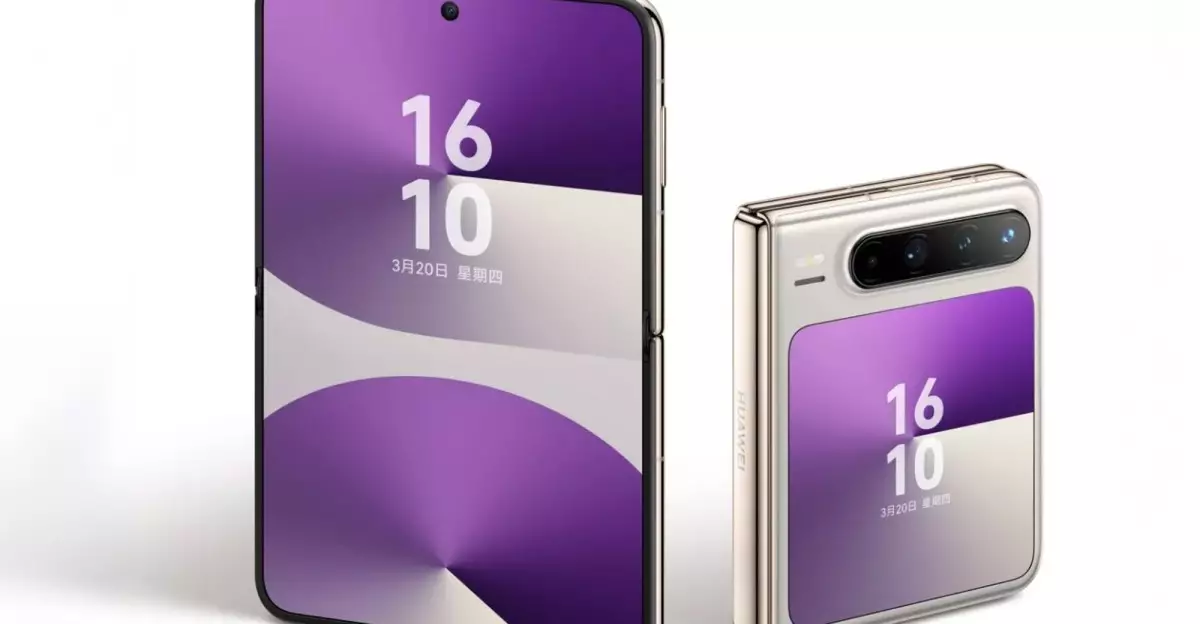Huawei’s latest offering, the Pura X, is more than just another smartphone; it’s a bold reimagining of the traditional mobile device. What sets this phone apart is its innovative flip design, which opens to the side rather than the top, producing a wider, more tablet-like appearance. This design choice is not merely aesthetic; it signifies a shift in how we interact with our devices. By prioritizing a wider aspect ratio of 16:10, the Pura X embraces a larger canvas for media consumption, multitasking, and app usage—qualities that echo the demands of modern smartphone users.
This redesign can be likened to a bridge between conventional flip phones and the emerging trend of larger, book-style foldables. Users often seek versatility, and the Pura X offers an enticing solution by providing a unique form factor that caters to both the compactness of a flip phone and the expansive utility of a tablet.
An Operating System that Defies Expectations
One of the most monumental shifts with the Pura X is its operating system—HarmonyOS Next, which stands distinct from Android. By eschewing the compatibility with Android apps, Huawei is stepping into uncharted territory. This approach can be seen as a gamble; while it liberates Huawei from the constraints of Android, it also poses a significant challenge in terms of app availability. However, with the tech giant’s robust investments in AI and software development, the potential is undeniable. Consumers are often hesitant to embrace a completely new ecosystem, but if Huawei can successfully onboard developers and create an engaging user experience, this could very well become a game-changer in mobile OS development.
The decision to altogether abandon the Android open-source framework represents not just a strategic pivot, but an assertion of independence in a highly competitive space. It demonstrates Huawei’s commitment to forging its own path, and it echoes a broader trend in the industry—companies relying less on established platforms and more on their own innovations.
Introducing Harmony Intelligence: A Closer Look at AI Integration
One of the standout features of the Pura X is its introduction of the Harmony Intelligence AI assistant. Huawei leverages its in-house Pangu model, refining it further with DeepSeek technology, yielding a sophisticated AI that aims to compete with established assistants like Google Assistant and Apple’s Siri. Industry leaders are slowly recognizing the growing influence of Huawei, and Nvidia’s CEO has acknowledged the company’s escalating prowess in the AI landscape.
The implication here isn’t just about new features; it’s about crafting a smarter, more intuitive user experience. As AI continues to evolve, the ability for Harmony Intelligence to learn and adapt to its user’s preferences will be key in distinguishing the Pura X from its competitors. This integration does not merely enhance functionality; it transforms how users engage with their devices. We’re moving towards a future where much of our interaction will be mediated by AI, and Huawei appears poised to lead that charge.
Market Introduction and Strategic Focus
At this stage, the Pura X is exclusively available in China, beginning at 7,499 yuan (approximately $1,037). This initial market focus allows Huawei to refine its offering and gauge consumer responses without the immediate pressures of a global rollout. It’s a strategic choice, allowing for incremental improvements based on direct feedback from a highly engaged consumer base.
Moreover, this approach may signal a calculated move by Huawei to make a significant impact in its home market before stepping onto the global stage, particularly given the ongoing constraints posed by international trade regulations. By concentrating its efforts domestically, Huawei can build momentum and gather invaluable insights that could inform future iterations of its products.
While the Pura X presents an evolution in design and functionality, it is also a statement of Huawei’s ambition. It is emblematic of a tech landscape where innovation is king, showcasing a compelling blend of daring design, independent software development, and powerful AI capabilities. As Huawei pushes boundaries, the anticipation surrounding consumer response will serve to inform not only the company’s trajectory but also potentially reshape the future of mobile technology altogether.


Leave a Reply